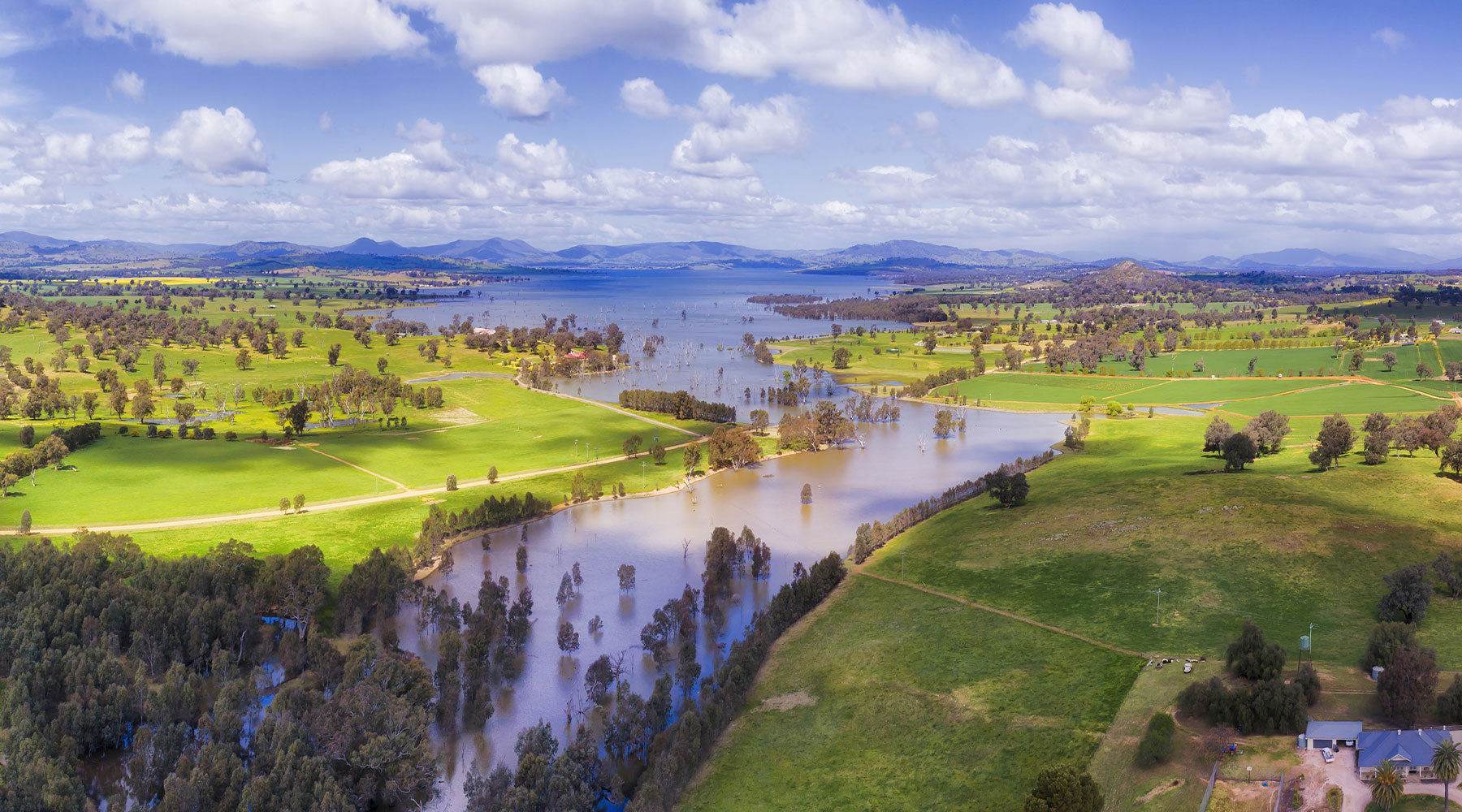
What happens when trees are waterlogged?
We have been made all too aware of the ongoing risk of flooding which has affected communities across the eastern seaboard and created structural issues across the country. Along with extensive damage to infrastructure, countless trees (and crops) have been inundated and subjected to flooding. What happens to these trees? Can we save them?
What happens when trees are flooded or submerged?
When trees are flooded, especially for an extended period, they often become waterlogged. Waterlogged trees are trees that in essence are drowning.
It is not always obvious when trees are becoming waterlogged. There doesn’t need to be water pooling around the tree, the damage can be coming from underground with waterlogged soil damaging the root system. For example, the magnificent Bunya Pine in the Albury Botanical Gardens.
Indicators can be:
- Leaves turn yellow or brown at the edges or centre
- Leaves have begun to droop or wilt (unseasonal)
- New growth withers before fully grown or becomes yellow
- Leaves appear green but are suddenly brittle to the touch
- In severe cases, watch out for leaning trees. A mound around the base of a leaning tree where it looks like the root ball is shifting is a cause for concern and immediate intervention
If your trees are displaying any of these symptoms after being submerged due to floods they may be suffering from being waterlogged.
Can you save an overwatered tree?
While prevention is often the best cure, there are a few things that you can do to try and help your trees recover from being waterlogged. Once it is safe to do so:
Clear away debris and excess soil from the base of your trees - any extra debris that is sitting at the base of your trees will hamper the trees’ ability to breathe and will likely keep the areas around the tree moist. This is going to result in rot, and eventually the death of the tree.
Identify areas that aren’t draining well - waterlogged soil that is holding an excessive amount of water does more harm than good to your trees. Attempt to increase drainage in these areas to help the tree breathe better so that it can recover.
Help your trees recover
With some careful treatment and time, there is a good chance that you will be able to save many of your trees, even if they have been submerged. Provide them a chance to dry out and support the drainage of water where possible. Help them replace the vital nutrients they will have lost.
When you need to remove waterlogged trees
You may need to make the difficult decision to cut or even remove the waterlogged trees as they pose a danger or hazardous risk. If this is the case, the best pruner or chainsaw will depend on how much wood you need to cut and its density. At this stage, It Is paramount that you consider your ability to perform this type of work and consulting an arborist Is highly recommended.
If you are looking for a lightweight pruner for occasional pruning tasks around the home and cutting small branches, something like the STIHL HT135 Pole Pruner is recommended.
For larger jobs, we recommend the STIHL MS 500i Chainsaw, an all-around saw that can tackle larger pieces of wet wood. It is also ideal for cutting firewood in the cooler months.
There may also be council or regulatory overlays in effect so It Is Important to understand the legalities surrounding tree removal to avoid prosecution and prevent unnecessary risk of property damage Including underground utilities.
If you’re wondering how to manage flood damage to trees, we’re here to help. Contact the team at Mower City Albury for advice, support and quality products that will help you.
